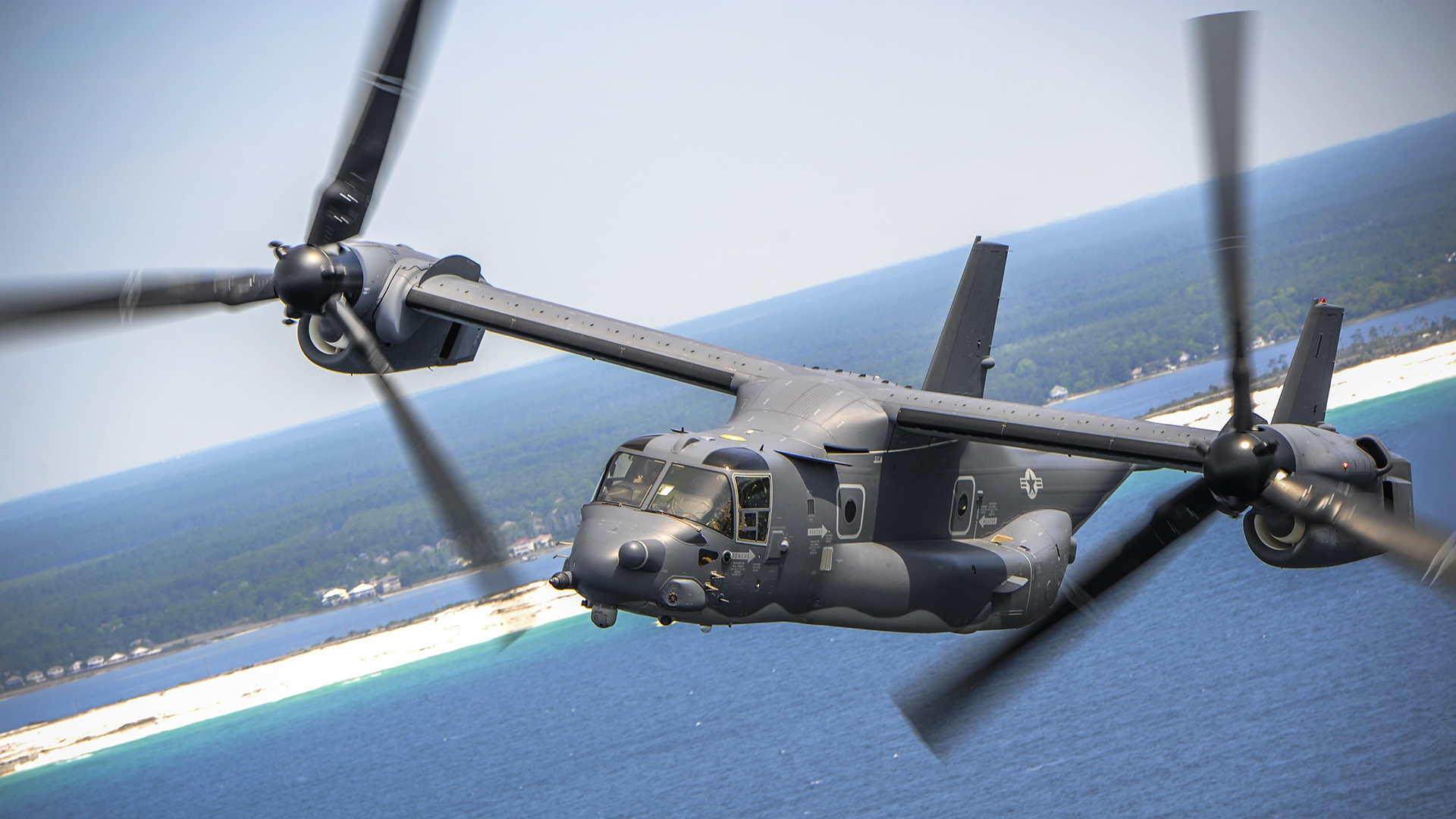

The remains of five American flyers have been found in the submerged wreckage of a CV-22B Osprey that crashed last week in coastal waters of Japan, according to U.S. Air Force Special Operations Command.
A total of eight crew members were aboard the Osprey when it went down on Nov. 29 near Yakushima, Japan. The body of one of the airmen aboard was recovered in the initial hours of the search and remains the only person on board whose identity has been released. Air Force Staff Sgt. Jacob “Jake” Galliher, was a Direct Support Operator assigned to the 43rd Intelligence Squadron.
“As a DSO [Direct Support Operator], Jake was an airborne linguist specializing in Chinese-Mandarin. DSOs fly as AFSOC aircrew members during training, exercises, and real-world contingencies,” AFSOC announced earlier. “Jake was a qualified DSO on the AC-130J, MC-130H, and CV-22B.”
Now, the remains of two additional crew members have been recovered, AFSOC announced on Monday. Air Force officials have not yet released the identities of the two airmen.
Subscribe to Task & Purpose Today. Get the latest military news and culture in your inbox daily.
Efforts to retrieve the remaining airmen from the Osprey’s fuselage are ongoing, an AFSOC statement says.
Two airmen who were aboard the Osprey when it crashed remain missing.
“The coalition of military, coast guard, law enforcement, mariners, and local volunteers remain steadfast in locating and bringing the US Service Members back to their units and their families,” the AFSOC statement says. “The military has also turned to dispatching professional support for the care of the families.”
The cause of the Nov. 29 mishap is not currently known. This is the second fatal crash involving special operators within a month. On Nov. 10, five members of the 160th Special Operations Aviation Regiment were killed when their MH-60 Black Hawk helicopter went down in the Mediterranean Sea during a training flight.
The Osprey itself has had a troubled history. A total of 30 people were killed in separate crashes during the aircraft’s development between 1992 and 2000.
More recently, three Marines were killed in August when their MV-22B Osprey crashed in Australia, and another four Marines died in March 2022 when their Osprey went down in Norway.
Both the Marine Corps and Air Force versions of the Osprey have proven to be susceptible to a type of failure in which one or both of its engines seize and tear themselves apart while the aircraft is flying. A Marine Corps investigation found that the engine failure, known as a hard clutch engagement, has caused over a dozen mishaps over the Osprey’s flying history, including a June 2022 MV-22B Osprey crash that killed five Marines.
Pentagon officials rolled out a series of fixes last year for the Osprey they say would drastically reduce the likelihood of the malfunction.
Deputy Pentagon Press Secretary Sabrina Singh was asked on Nov. 30 whether the Defense Department is concerned about the possibility of systemic problems within the U.S. military’s Osprey’s fleet.
Singh said that the cause of the Nov. 29 crash remains under investigation.
“If the investigation concludes that there need to be additional steps taken, we’ll certainly do that,” Singh said at a Pentagon news briefing, “But at this time, the investigation is underway on what happened.”
The latest on Task & Purpose
- Marine Infantry veteran says enlisted shouldn’t become officers — mayhem ensues
- Father loses 80 pounds, joins Air Force alongside his 2 sons
- Opinion: Veterans won’t help the recruiting crisis until our issues are addressed
- Navy fires head of Amphibious Squadron 5 for ‘loss of confidence’
- How much do CIA case officers get paid? A look at life as a spook